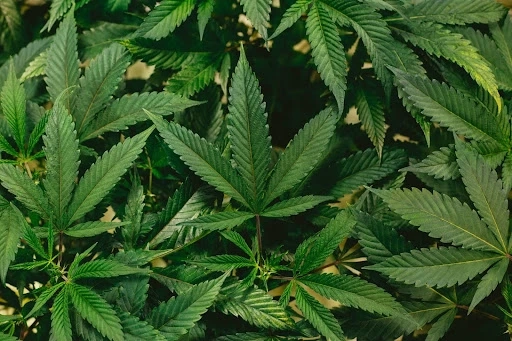If there’s a plant that’s been around for a long time, that would be the good old hemp. It has benefited the human race for at least 10,000 years. Hemp cultivation for its fibers dates back as early as 2,800 BCE in China.
After discovering this plant, people of ancient times started to use hemp crops in everyday life in more ways than one. And until now, hemp remains one of the most useful plants in creating cannabidiol oil, which Bluebird Botanicals specializes in. The increasing demand for CBD oil and hemp products has spurred innovation in the industry, leading to a wide range of products, including tinctures, edibles, topicals, and pet products.
Read this piece to learn about the ways hemp can be used throughout the centuries:
1. Food and Oils
Early humans turned to hemp plants for their edible seeds. Hemp seeds contain a good mixture of omega-3 and omega-6 fatty acids, high-quality protein, essential amino acids, and various vitamins and minerals. The high fiber content of these seeds helps aid digestion. Over the centuries, whole hemp seeds can now be consumed raw, roasted, cooked, or ground into powder. They can take the liquid form with hemp milk, juice, and tea.
Hemp seeds have been a popular part of the Chinese diet for centuries. In the United States, hemp seeds are steadily gaining popularity. In the modern world, hemp oils or hemp seed oil are common remedies for stress. Hemp protein, the plant-based one, is an excellent source of fiber that you should include in your diet.
Moreover, the use of CBD oil and hemp products has gained significant traction in recent years due to their potential health benefits. CBD is a non-psychoactive compound used for relieving stress and improving sleep quality. It is from the cannabis sativa plant.
2. Paper
Hemp paper became a staple in the printing industry. Most famous books during the Renaissance were printed on these papers. "The Diamond Sutra," widely regarded as the first printed book of all time, was also printed on hemp-made paper in the year 868.
Other famous works printed on these kinds of papers include Gutenberg\'s Bible and Thomas Jefferson\'s first drafts of the Declaration of Independence. But it wasn\'t just books that used hemp fibers in printing—banknotes and packaging materials were also made out of them.
3. Clothing and Footwear
Hemp-made clothing kept people warm throughout the ages. Its longevity and durability make it a better option than cotton, although the latter became a commonly used fabric for clothes in the textile industry. Hemp clothing is still in style as it is worn when mourning deceased relatives. In Japan, only sumo wrestlers wearing hemp-made clothing can enter the ring.
Like in clothing, hemp fibers make durable and comfortable footwear like shoes. Hemp is easy to grow and only needs a little water. It’s antimicrobial, waterproof, and odor-resistant, which makes it a perfect material for shoemaking. On top of that, hemp is biodegradable—it won’t pollute the environment once you discard your hemp-made shoes or any material made of hemp.
4. Ropes, Insulation, and Other Products
Hemp fiber makes excellent and sturdy ropes. They’re strong, durable, and resistant to moisture. Our ancestors made ropes using hemp fibers to carry food, create building materials for construction, navigate the seas, and domesticate horses. Hemp-made ropes are resistant to corrosion when exposed to seawater and harsh weather conditions at sea compared to synthetic fiber.
On the other hand, using hemp in creating insulation materials will greatly reduce energy consumption. It is best used for roof and both interior and exterior wall insulation. Although its fibers are highly flammable, adding boric salt or soda to the hemp material before making the insulation makes it fire-resistant. Hemp also comes in the form of industrial hemp, which is made for manufacturing purposes. The stalk of industrial hemp can be used to make auto parts, upholstery, fiber for cloth, and more.
5. Sacraments
The altering of consciousness is one of the most obvious reasons early humans harnessed the hemp plant. With whole mountain slopes growing hemp, plants are thrown onto a bonfire while people dance around it, thus creating a community in sacred spaces.
Here’s how hemp played a role in various sacraments back in the day:
- Ancient China: Hemp seeds were used as religious offerings. Spiritual leaders wore clothing made of hemp. Taoists use hemp in their search for immortality.
- New Age: Hemp oil, hemp fiber, and other hemp-based products are incorporated into spiritual practices, such as meditation and aromatherapy.
- Rastafarians: Using hemp puts them into meditation and brings them closer to enlightenment.
- Hinduism: Some sects use hemp by creating sages for their religious practices associated with praising Lord Shiva. They consume bhang, an edible preparation made of hemp leaves, during the festival of Maha Shivaratri.
Final Thoughts
Hemp has been around for many centuries. The hemp fibers have served a lot of purposes for hemp farmers and people all around the world. As for the health benefits, hemp seeds contain essential fatty acids and amino acids that boost your body’s immunity. When using any hemp-related product, do your research first and buy from your trusted sellers only.


